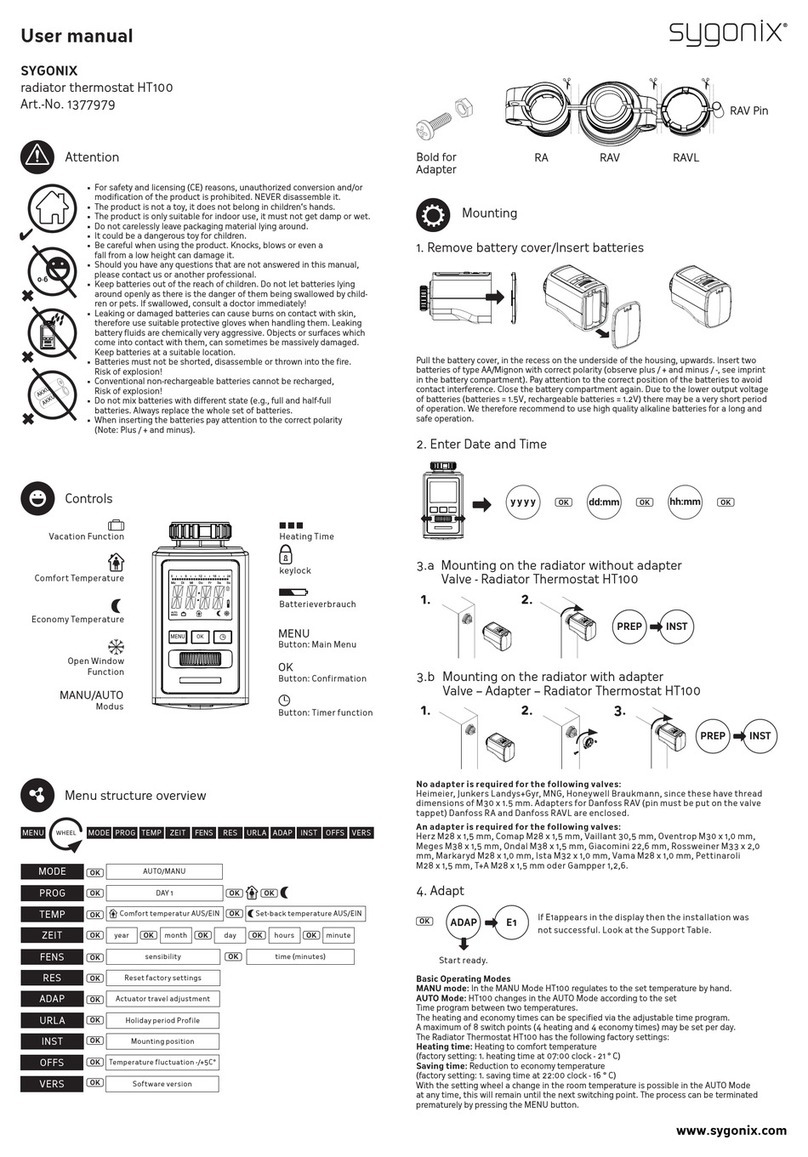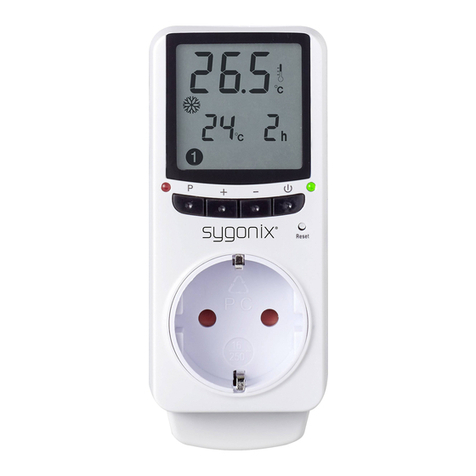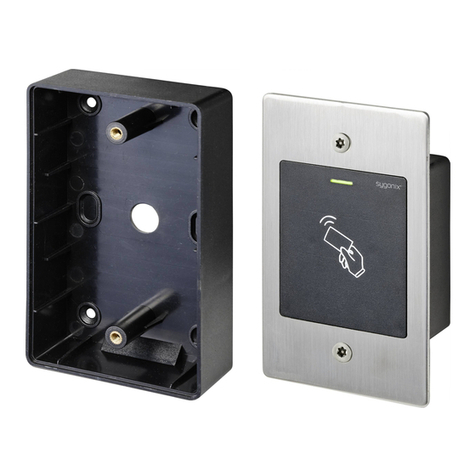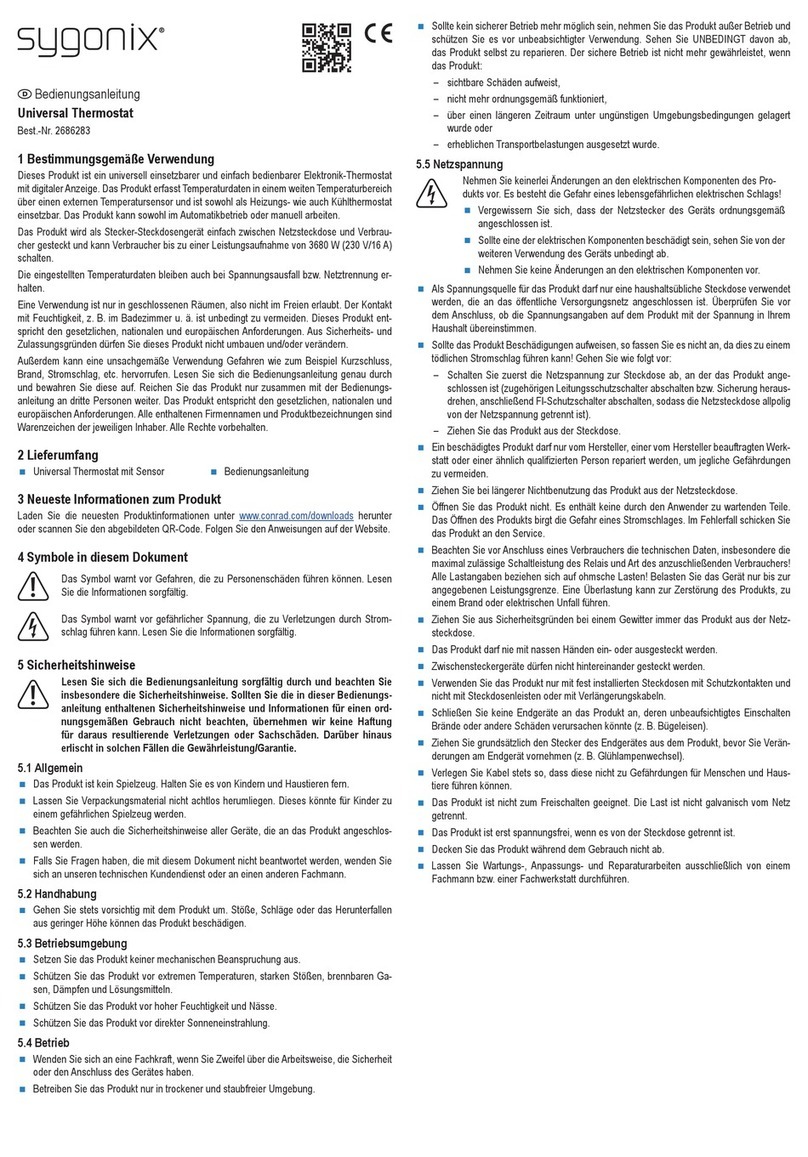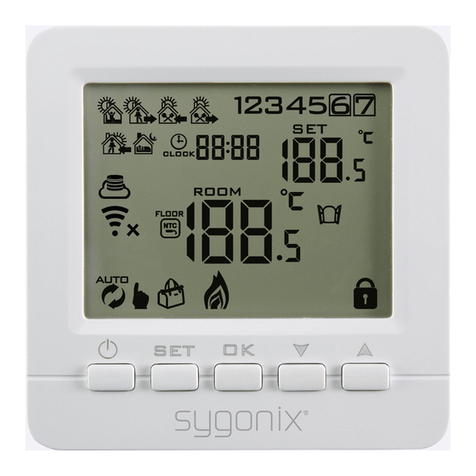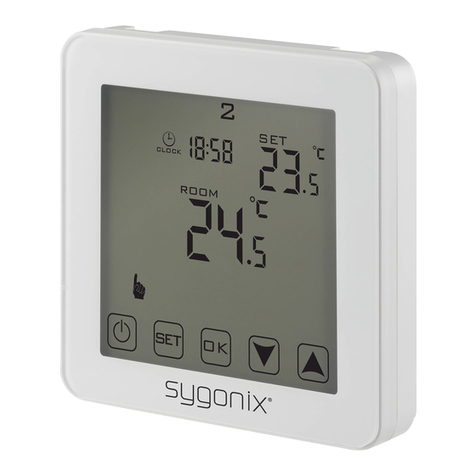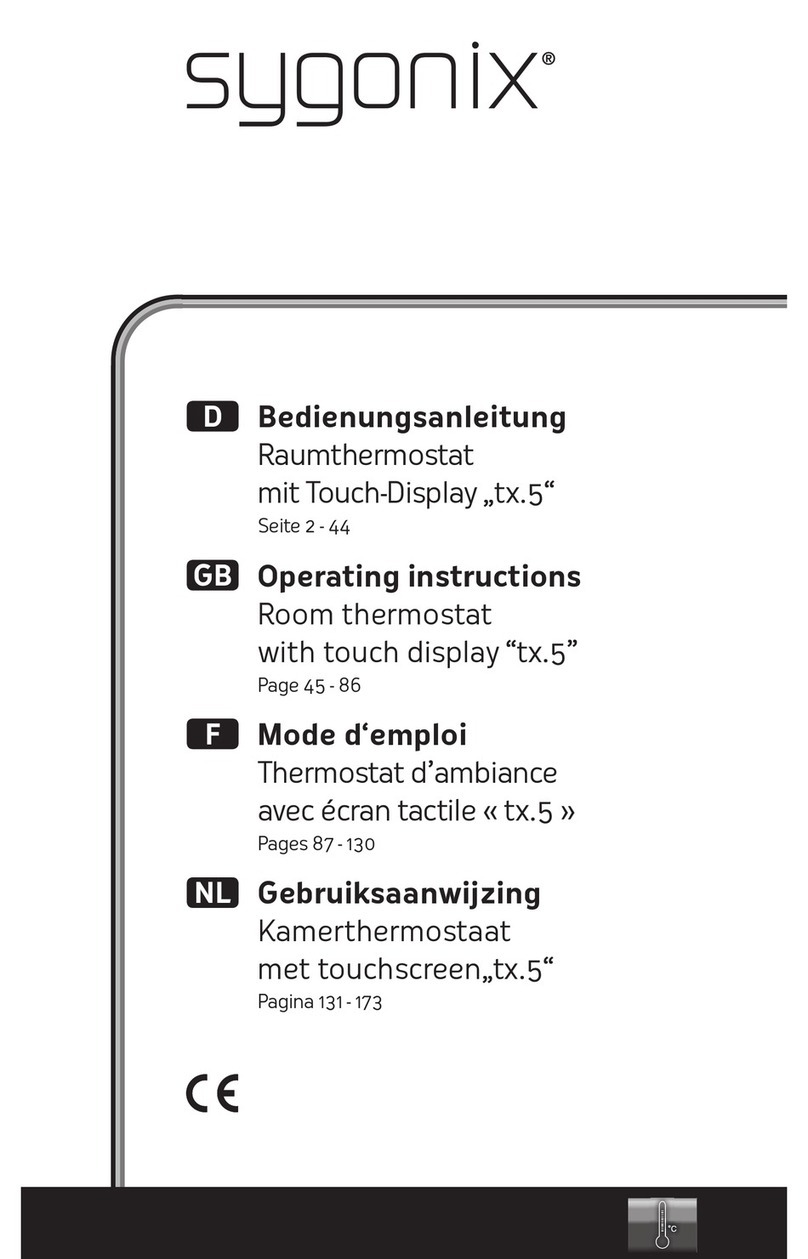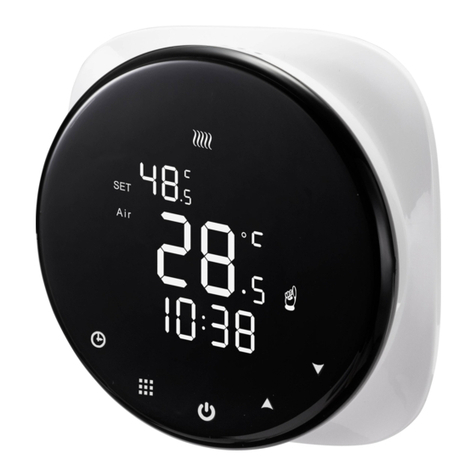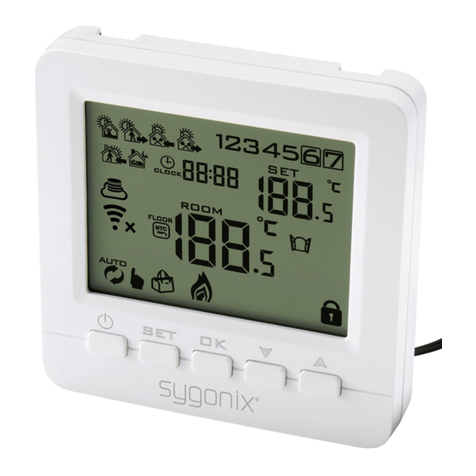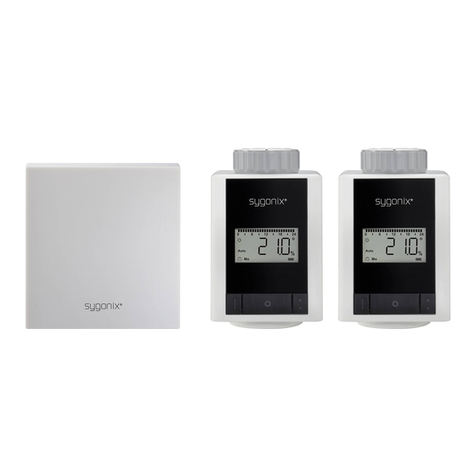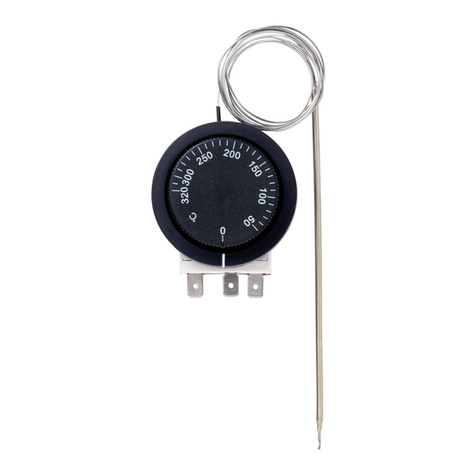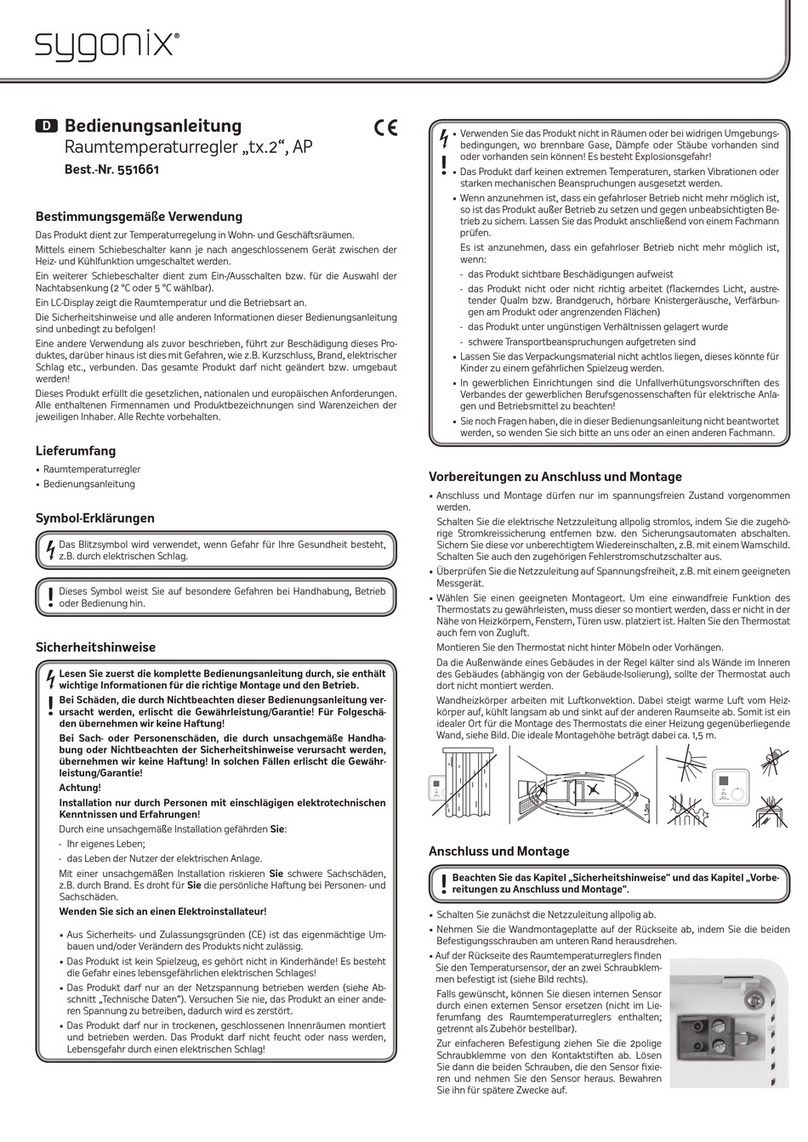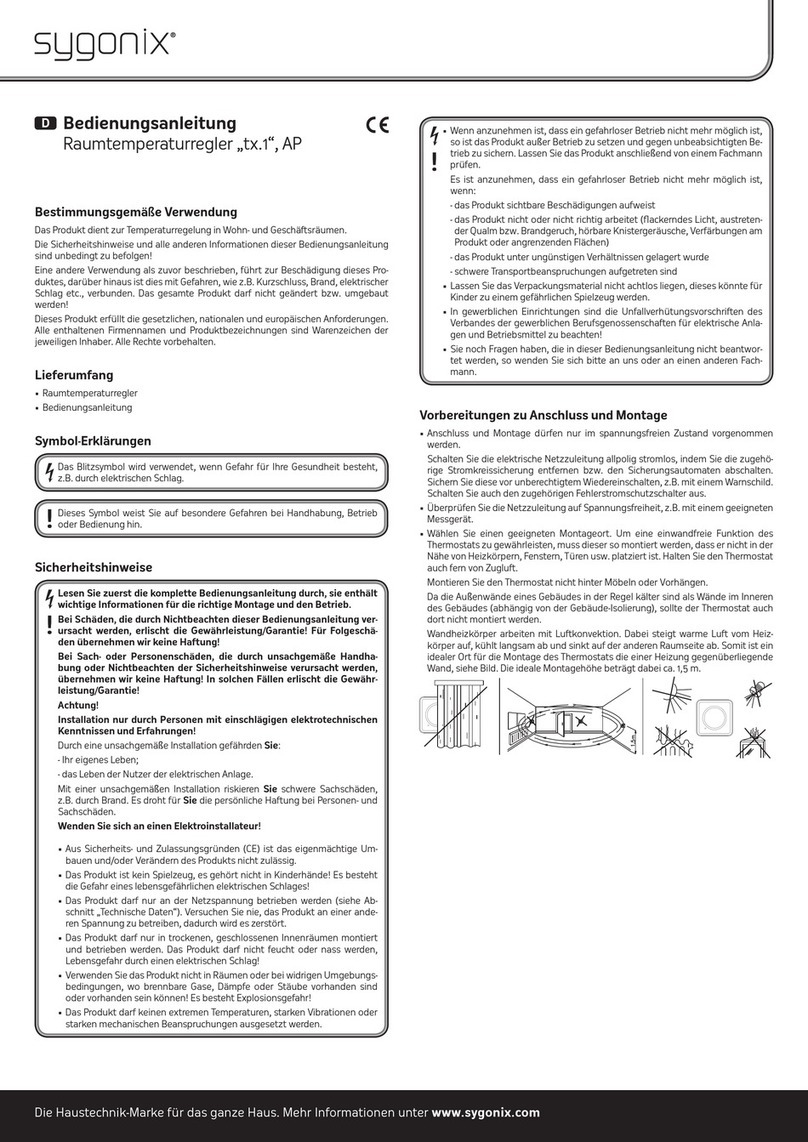
1
Please handle the product carefully. Jolts, impacts or a fall even from a low height can
damage the product.
Consult a technician when in doubt about the operation, safety or connection of the ap-
pliance.
If you have questions which remain unanswered by these operating instructions, contact
our technical support service or other technical personnel.
5.2 Installation/connection
Caution, safety hazard!
The product should only be installed and connected by people with relevant
electrical knowledge and experience! *)
If the product is not installed properly, you risk:
your own life;
the life of the person using the electrical device.
If the product is not installed properly, you risk severe damage to property, e.g. due to re. You
face the risk of personal liability for personal injury and material damage.
Always consult an electrician!
*) Technical knowledge required to perform the installation!
The following specialist knowledge is required for installation:
The “Five Safety Rules”: Disconnect from the mains; protect against accidental switch-on;
ensure there is no voltage; earth and short-circuit; cover or protect adjacent live parts.
Use of suitable tools, measuring devices and personal protective equipment, where neces-
sary.
Analysis of measurement results.
Use of electrical installation materials to meet the requirements for safe disconnection from
the power supply.
IP protection ratings.
Installation of electrical installation materials.
Type of power supply (TN system, IT system, TT system) and the corresponding con-
nection criteria (classic earthing, protective earthing, necessary additional measures, etc.)
If you do not have sufcient knowledge in all of the aforementioned topics, contact a specialist
and do not attempt to install or connect the product yourself.
Further warnings:
The construction of the product corresponds to the protection-class II (double or re-
inforced isolation). Ensure that the insulation of the housing is neither damaged nor
destroyed.
Before installing the switching module, disconnect all poles from the mains voltage
using a residual current device (RCD). There must be an appropriately rated fuse or
circuit breaker between the RCD and the product.
The device must be de-energised during installation and connection of the switching
module. Furthermore, turn off the automatic circuit breaker and the RCD to disconnect
all poles from the mains voltage. Secure it against unauthorised reconnection, e.g.
with a warning sign. Then check to ensure there is no voltage with a suitable measu-
ring device (e.g. a two-pole voltage tester).
Never connect the product to the power supply immediately after it has been transfer-
red from a cold room into a warm one (e.g., during transport). The condensation that
forms may destroy the device. Moreover, there is danger of electric shock!
Always let the product reach room temperature rst. Wait until the condensation has
evaporated. In some cases, this may take several hours. Only once the condensation
has evaporated should it be installed, connected to the power supply and put into use.
Do not use the product in rooms with adverse environmental conditions, where com-
bustible gases, vapours or dust are or may be present! This may cause an explosion!
5.3 Protection class
This device has an IP20 ingress protection rating and is suitable for dry rooms.
There is protection against touching live components and ingress from foreign particles
>12.5 mm.
There is no protection against water, combustible gases, and vapours.
Operating instructions
Wireless heating thermostat
Item no. 2735095
1 Intended use
This product is a wireless heating thermostat intended for temperature control and can be
integrated into an electric heating system, such as oor heating or panel radiators.
You can schedule the room temperature precisely to the hour to suit your individual needs.
You can programme the room temperature for 7 days in advance. With six programmable time
settings a day, you can reduce your heating costs and adjust the temperature in your home to
your needs. You can save on heating costs when you are on holiday or away on business. The
holiday mode keeps the temperature in your home constant at a preset level.
The wireless heating thermostat is powered by two Mignon batteries (AA). The switching re-
ceiver is connected directly to the mains voltage. You can also connect a consumer operated
via the mains voltage supply to the switching receiver and switch it on or off through tempera-
ture control.
The heating thermostat has a built-in temperature sensor (probe) and allows connecting an
external sensor to the switching module. The product has a button lock feature that prevents
incorrect operation and a permanently installed decoupling capacitor for data backup in the
event of a power failure. This device has an IP20 ingress protection rating and is suitable for
dry rooms and indoor use. Do not use it outdoors. Contact with moisture, e.g. in bathrooms,
must be avoided under all circumstances.
For safety and approval purposes, do not rebuild and/or modify this product. If you use the
product for purposes other than those described above, the product may be damaged. In addi-
tion, improper use can result in short circuits, res, electric shocks or other hazards. Read the
instructions carefully and store them in a safe place. Make this product available to third parties
only together with its operating instructions.
This product complies with the statutory national and European requirements. All company and
product names contained herein are trademarks of their respective owners. All rights reserved.
2 Delivery content
Radio room thermostat
Switching module
4x Screw
Operating instructions
3 Up-to-date operating instructions
Download the latest operating instructions at www.conrad.com/downloads or scan the QR code
shown. Follow the instructions on the website.
4 Description of symbols
This symbol warns of dangerous voltage that can lead to injury from electric shock.
Read the information carefully.
The symbol with the exclamation mark in the triangle indicates important information
in this document. Always read this information carefully.
The product should only be used in dry, indoor locations. It must not get damp or
wet.
The product is designed according to protection Class II (reinforced or double insu-
lation, protective insulation).
Pay attention to the operating instructions!
5 Safety instructions
Read the operating instructions carefully and adhere in particular to the safety
instructions. If you do not heed the safety instructions and information on
proper handling in these operating instructions, we will assume no liability
for any resulting personal injury or property damage. Such cases will also
invalidate the warranty/guarantee.
5.1 General information
This product is not a toy. Keep it out of the reach of children and pets.
Do not leave packaging material lying around carelessly, as it could become a dangerous
plaything for children.
Protect the product from extreme temperatures, direct sunlight, strong jolts, high humidity,
moisture, ammable gases, vapours and solvents.
Do not expose the product to any mechanical stress.
If it is no longer possible to operate the product safely, take it out of operation and protect
it from any accidental use. Safe operation can no longer be guaranteed if the product:
– is visibly damaged,
– is no longer working properly,
– has been stored for extended periods in poor ambient conditions or
– has been subjected to any serious transport-related stress.
